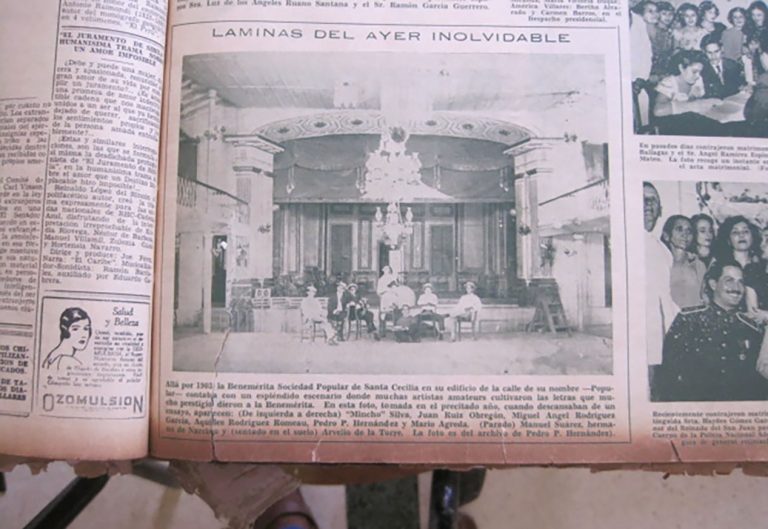The Musical Center education and recreation association is inserted in a context where the musical tradition in Camagüey is indisputable, as the researcher Verónica Hernández rightly argues, since in the different publications one could find comments and announcements referring to music, to the programming of theaters since the mid-nineteenth century.
In addition, there were several orchestras linked to the education and recreation societies. They also offered concerts, musicians and guest singers from other provinces and countries.
Now, as a trade, music has also been present as a tradition in the black and mestizo population, as the censuses of the colony and bourgeois republic reflect. In the same way we find names that from this practice were involved with the independence deeds, through the associations linked to said social group. However, some specific to the sector would emerge, among which is the Musical Center.
Music Center Recreation and Education Association
Founded on July 4th, 1902, its central objective was to put in contact, moralize and improve the musical elements of the town, providing them with all kinds of spaces to perform rehearsals together, with the different orchestras or separately; as long as the partners agree.
The society would keep its salons open every day from six in the morning until eleven at night. Specifically, the orchestras that performed within their premises would freely exercise their artistic functions without the Board of Directors having jurisdiction over them.
I would recognize three kinds of partners: number or professionals; the students and the protectors. Specifically, the children of the partners would be entitled to receive musical art at the academy. It is valid to add that political and religious issues would not be discussed in it. Important musicians joined its ranks, among them, Víctor Pacheco Arias stands out.
Victor Pacheco Arias
His designation as the first president is supported by his great career as a musician, composer, director of groups and mambí; which has not gone unnoticed within the publications related to this field.
Although he was born in Manzanillo, his work as a professional was carried out in the territory of Camagüey. He founded the Libertad Band, the best organized and largest of those that existed in the Liberation Army camps. He instrumented the scores and directed the group that accompanied the visiting companies at the Main Theater. He equally tackled symphonic music and the operatic genre.
As a mambí he was taken prisoner and sentenced to death, but his job as a clarinetist saved his life.
Conclusions
Without a doubt, the Musical Center edication and recreation association was not only a fundamental meeting place for professionals dedicated to musical art, but also a space dedicated to teaching, where these generations of students would become a significant base for the subsequent development of this artistic manifestation in the territory.
Bibliography
Fernández Díaz, Verónica Elvira. Diccionario de música camagüeyana: Siglo XIX. Camagüey: Ediciones El Lugareño, 2016.
La música en la revista “Lis”, dirigida por Nicolás Guillén. Blog Gaspar, El Lugareño. Artículo del 9 de noviembre de 2021-
Materiales consultados en el Archivo Histórico Provincial de Camagüey.
Translated by: Aileen Álvarez García






